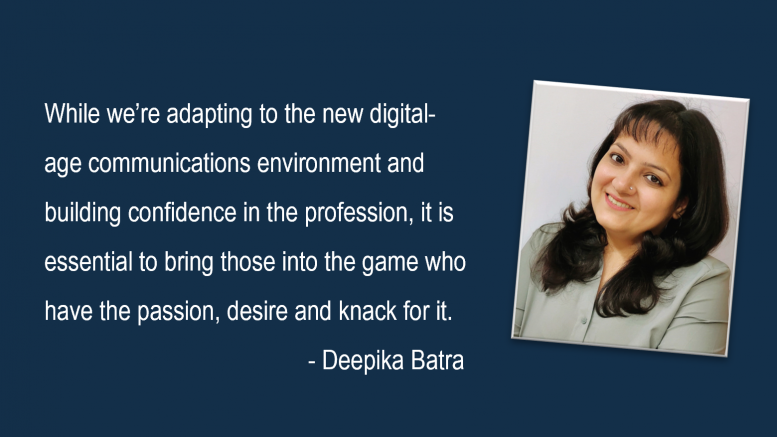I started my career in Public Relations in 2011.
My parents, then, struggled to understand what my job was. I told them “Public Relations or PR could be easily defined as a profession that was responsible for maintaining a brand’s reputation via communication with its target audience. PR was a bridge that connected a brand to its stakeholders, directly through announcements and initiatives or by strategically positioning it at the forums where it could be heard, seen and noticed by its peers, competitors and the industry at large.”
Their perplexed expression told me they were far from deciphering it. So, I told them we get our clients’ stories published in newspapers. Period. And since then, that is what they have told everyone else about my job.
In my limited years of experience, if I try to decode a client’s psyche, getting published in traditional media aka print media (read: newspapers and magazines) is the biggest pull factor for them, when deciding to hire a consultancy to manage their relations with their public. But thankfully, over the years this rigidity has mellowed down, as new-age media, new technologies and new mindsets have arrived on the scene.
Clients are coming forward as collaborators and PR professionals are being seen as part of an integrated team, working collectively to devise the best workable strategies to tell a brand story, in the most effective manner. This has been made possible because a lot of organisations showed courage to shed the old ways of how successful communications was perceived and accepted that with time storytelling has evolved. While this is good start, it is not an absolute norm or practice across the industry.
Therefore, the onus lies on us, those who are representing the field, for ‘Futureproofing Public Relations.’
To do so, we need to address the below points:
- How long will PR be equated with Print media amplification: Five years from now, PR in a traditional sense will not have a long-term future; or at least it will be lonely, dissatisfying, half-baked and delusionary. Over the last few years, a careful and well-thought amalgamation of Traditional media (Wires, Print, Magazines, Trade and Regional) + New-age Digital media (Video led platforms, Owned Social Media platforms, Websites and Podcasts) has lent brands the best business outputs and favourable coverage outcomes, thereby increasing their ‘Share of Voice’ and ensuring customer retention.
- Re-invent the definition and role of PR: PR as a standalone function within an organisation seems to be a thing of the past. Integration of PR and marketing communications appears to be on the rise – 59% are working more closely with the marketing department than two years ago, and a massive 76% are now working more closely with the social/digital teams. Bidding adieu to the old perception of talking to the press and doing press releases only, there has been a distinct change of ownership for some functions, as PR departments are now responsible for copywriting, print and design, website design, internal comms, on-field surveys, coding and development, understanding SEO impact and even advertising.
- Hire those who have the hunger for this profession: While we’re adapting to the new digital-age communications environment and building confidence in the profession, it is essential to bring those into the game who have the passion, desire and knack for it. Public Relations is not a ‘Stop Gap Arrangement’ before one makes up their mind for another lucrative option or develop other interests. If you are in it, you have to be in it with all your heart and mind. The field is dynamic, testing, rewarding, tedious, glamourous, creative, mundane and marvelous all packaged into one. But under no circumstance it has a place for non-committed or non-ethical individuals. It is important to have the right attitude, aptitude, skills and flexibility to learn and unlearn as per the shifting comms landscape.
Conclusion: As the field matures and its push and pulls transform, it is incumbent upon those who are leading the way to strike a careful balance of experience, expertise and enthusiasm to keep the PR profession flourishing and fulfilling for brands to find a meaning and purpose for which they exist.
The views and opinions published here belong to the author and do not necessarily reflect the views and opinions of the publisher.



Be the first to comment on "Striking the balance between Experience, Expertise & Enthusiasm"